Hydrangeas are gorgeous plants known for their beautiful blossoms. These flowers come in many colors, including blue, pink, purple, and white.
Unfortunately, like many plants, they can still be threatened by pests. If something’s been eating your hydrangea plant,
you’ll want to identify the pest before your flowers are seriously damaged.
Table of Contents
What is Eating My Hydrangea Leaves?
Pests that eat hydrangea leaves include aphids, spider mites, and slugs. To keep your plants safe, visually inspect the leaves of your plant and look for signs of pests. Get rid of any pests you find and take preventative measures to keep your hydrangeas safe in the future.

11 Things That Are Eating Your Hydrangea Leaves
The more you are aware of pests, the more you’ll be able to do to protect your hydrangeas. These are some of the pests you’ll want to watch out for.
Spider mites
In spite of their name, these eight-legged mites aren’t actually spiders. Spider mites puncture the leaves of hydrangea plants, which allows them to feed off of the the sap inside.
You’ll find silk webs on the underside of your plant’s leaves if you have a spider mite infestation.
You’ll also find puncture holes as well as yellow and brown spots on the leaves that they feed on.
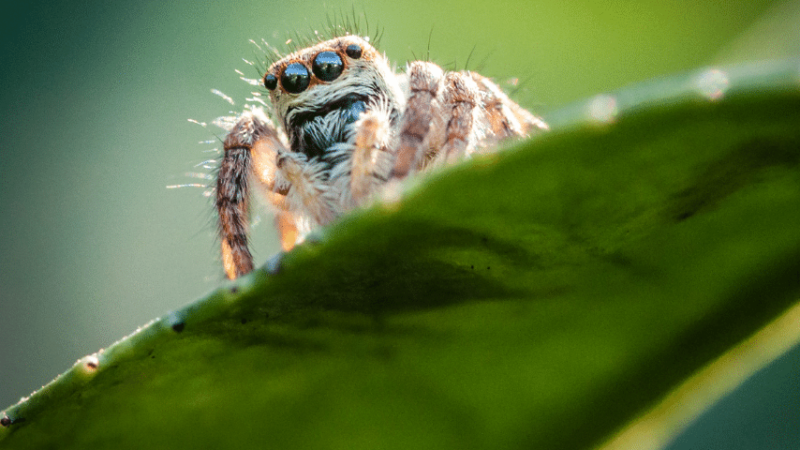
Caterpillars
Butterflies are a welcome presence in any garden, but caterpillars can be unpleasant. Caterpillars are ravenous eaters and will happily munch on the leaves of your hydrangeas.
One of the easiest ways to detect caterpillars is to look for holes in your plant’s leaves. Some types of caterpillars may also leave behind eggs or webbing.
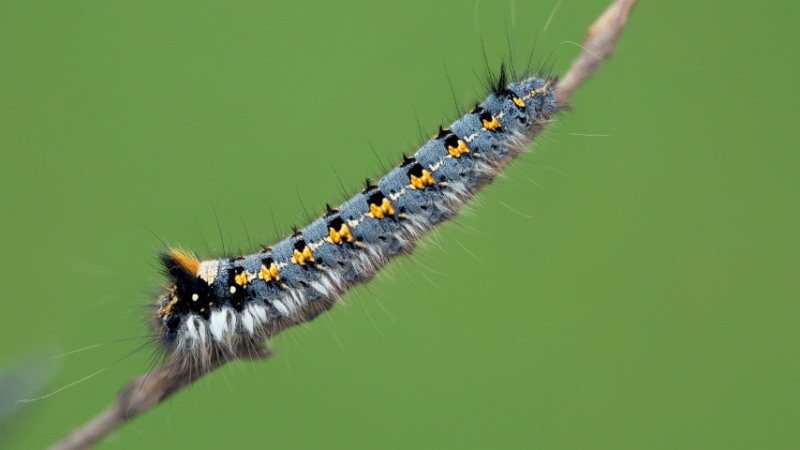
Aphids
Instead of biting into leaves, aphids drain hydrangea leaves of their juices. These tiny insects attack plants in large groups, allowing them to do a lot of damage in a short amount of time.
When aphids attack a plant, they leave behind a sticky residue on the plant’s leaves. If your plant has been targeted by aphids, the leaves will start to go yellow.
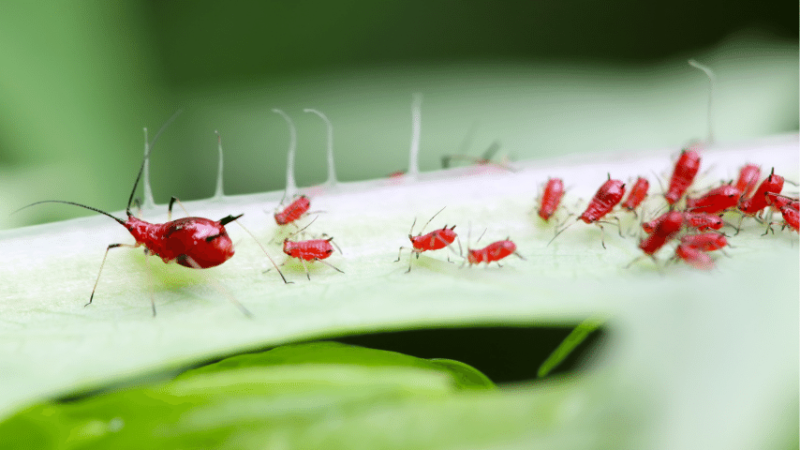
Japanese beetles
These scarab beetles may be small, but they’re still a threatening garden pest. Your hydrangeas’ leaves are destroyed by Japanese beetles, who leave behind ragged holes.
Since Japanese beetles are brightly colored, you’ll usually be able to spot them in your garden. Not only will they attack your hydrangeas, but they’ll go after other plants as well.
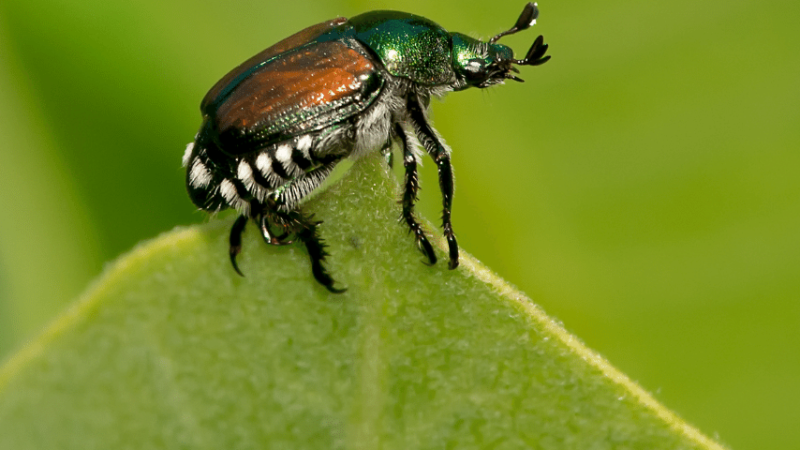
Rose chafers
Rose chafers feed on both leaves and blossoms, making them deadly to hydrangeas. In addition, rose chafer grubs will target the roots of your plant.
If you have rose chafers in your garden, you’ll see holes in the leaves of your plants and in its flowers. You may also spot eggs just beneath the surface of the soil.
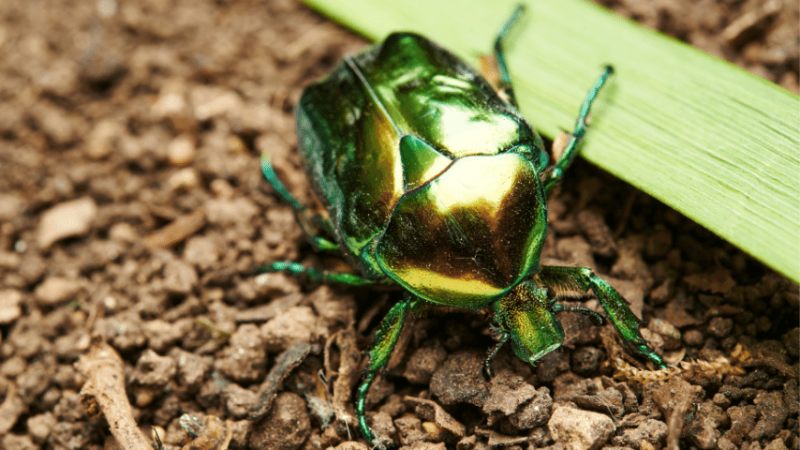
Slugs and Snails
Slugs and Snails typically feed off young hydrangeas, but they’ll eat the leaves of plants of adult plants as well.
They’re especially likely to attack your garden in the summer, when the weather is hot and humid.
Even if you don’t catch slugs or snails in action, you can usually spot them thanks to the trails of slime that they leave behind.
If you see signs of slugs, wait for them to come out at night and remove them from your plant.
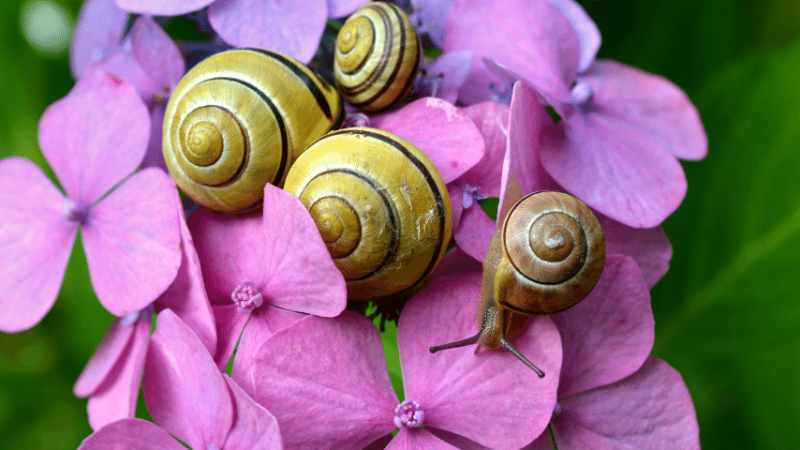
Scale
This tiny bug spends the majority of its life attached to a plant. Usually, they’ll target plants in large numbers, which can be deadly to hydrangeas.
If scale have attached themselves to your hydrangeas, you’ll see spots on its leaves that look like scales.
The most efficient technique to deal with scale is to prune away any leaves that they’ve attached to.
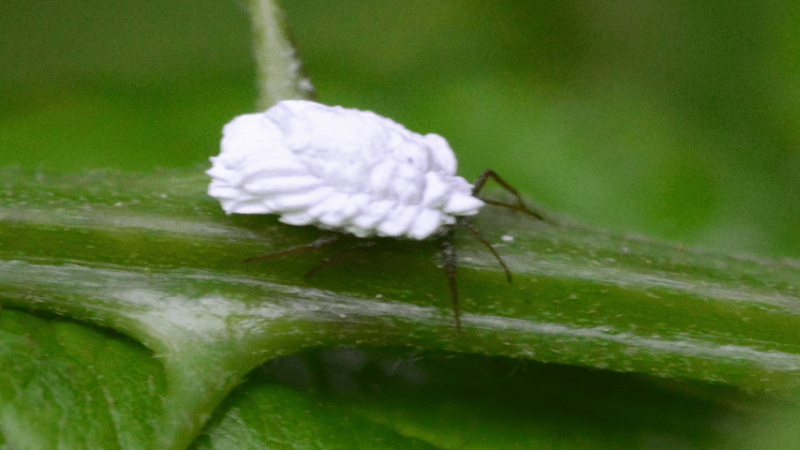
Whiteflies
These tiny-yet-deadly pests are a close relative of aphids. Whiteflies live on the leaves of plants like hydrangeas so that they can feed off of their sap.
You can often spot whiteflies on the leaves of your plants, but they leave behind other telltale signs as well. They secrete honeydew and cause the leaves of a plant to yellow.
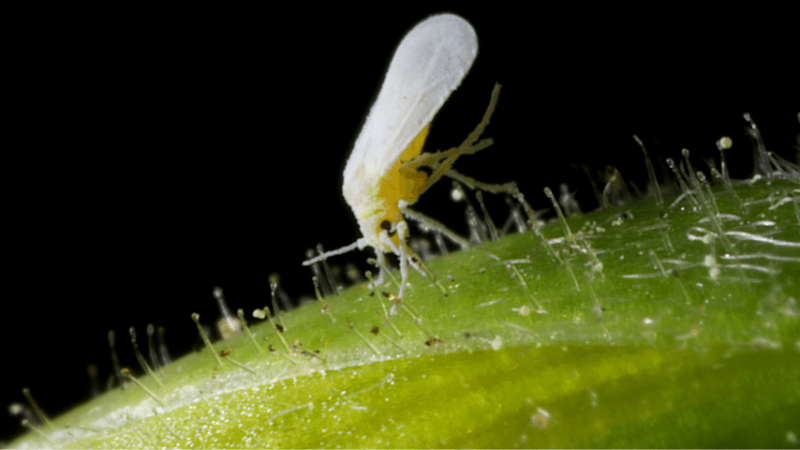
Fruit Worm
These moth larvae are small, green, and are sometimes mistaken for caterpillars. They feed off of many types of plants, including hydrangeas.
When fruit worms feed on leaves, they leave behind oozing holes. If you look at your plant closely, you may even be able to spot the tiny green larvae as it crawls across your plant’s leaves.
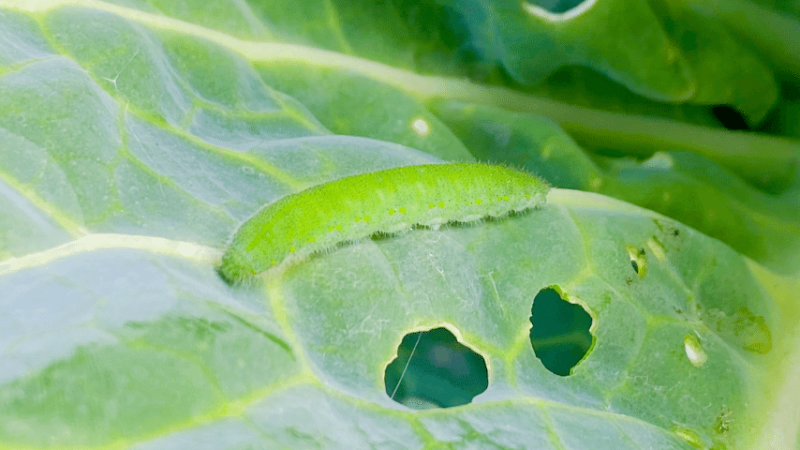
Deer
Most of the pests that attack hydrangeas are tiny, but there are some mammals that will eat the leaves of your plants as well.
It’s especially common for deer to feed off the leaves of young plants. When deer feed in a garden, they leave behind tracks and droppings.
In some cases, deer may also trample other plants in your garden in order to reach your hydrangeas.
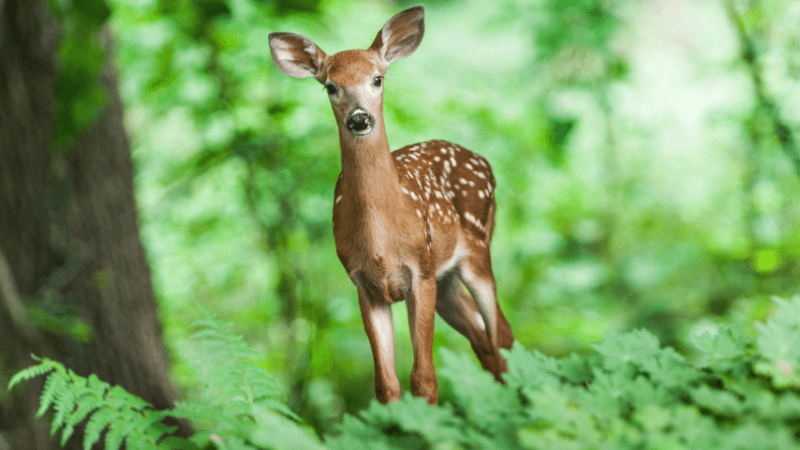
Fungus
If you’ve noticed spots on the leaves of your hydrangea, but you haven’t seen any other signs of pests, it’s possible that your plant is infested with some type of fungus.
Fungal diseases can be an issue for hydrangea plants. Neem oil, a natural pesticide made from neem tree seeds, can get rid of garden pests and take care of your fungus problem.
Spray it on your plant’s leaves if you think that you’re dealing with fungus.
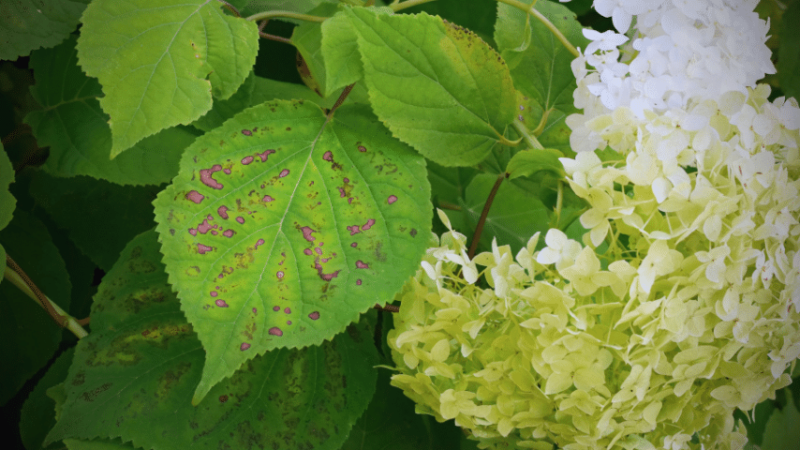
How Can I Protect My Hydrangeas from Pests?
If you spot pests on hydrangeas, you can try spraying your flowers with a natural pesticide or removing the pest by hand and dropping it into a mixture of water and dish soap.
When removing pests, it’s best to wear gloves to keep your hands safe. While you should act quickly if you do spot pests, it’s also a good idea to take steps to avoid future infestations.
You can make it hard for pests to spread by leaving at least six feet of distance between each plant.
It’s also important to prune your plant regularly and cut away any leaves that are starting to yellow or brown.
Use a disinfectant on your shears after pruning so that you don’t spread eggs or fungus.
You can also think about introducing ladybugs to your garden. Ladybugs feed off of many pests that target hydrangeas and can serve as a line of defense for your flowers.
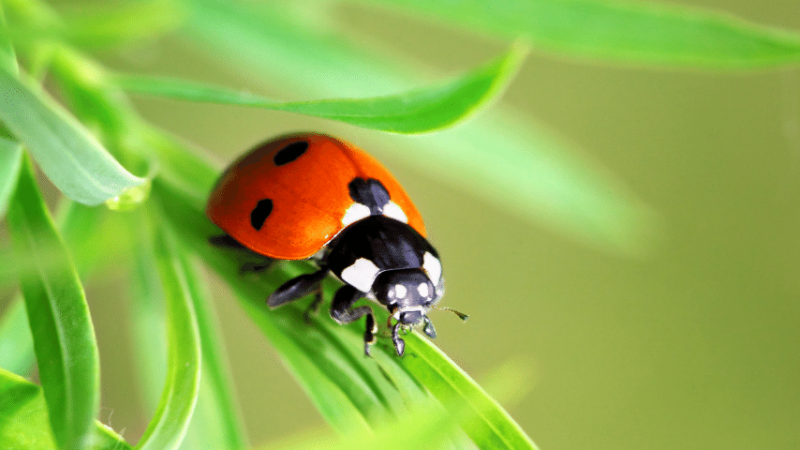
Frequently Asked Questions About What is Eating My Hydrangea Leaves
What Do I Do With Dead Hydrangea Flowers?
If any of the blossoms on your hydrangeas are dead, you can prune them or pinch them off with your fingers. This is known as deadheading.
Can Hydrangeas Grow Indoors?
Hydrangeas can thrive indoors as long as they receive ample water and sunlight. Moving hydrangeas indoors can be a temporary solution to a pest problem.

![What is Eating My Hydrangea Leaves [writer access]](https://blackhillsgarden.com/wp-content/uploads/2022/06/What-is-Eating-My-Hydrangea-Leaves-writer-access.png)